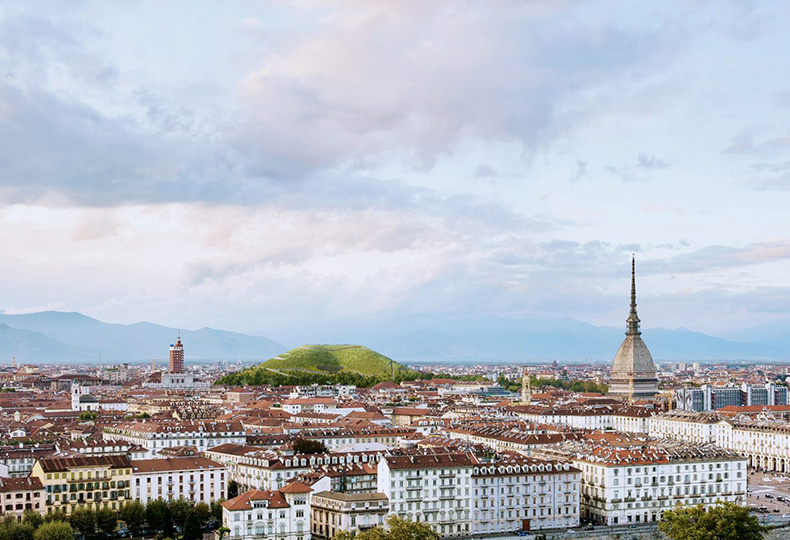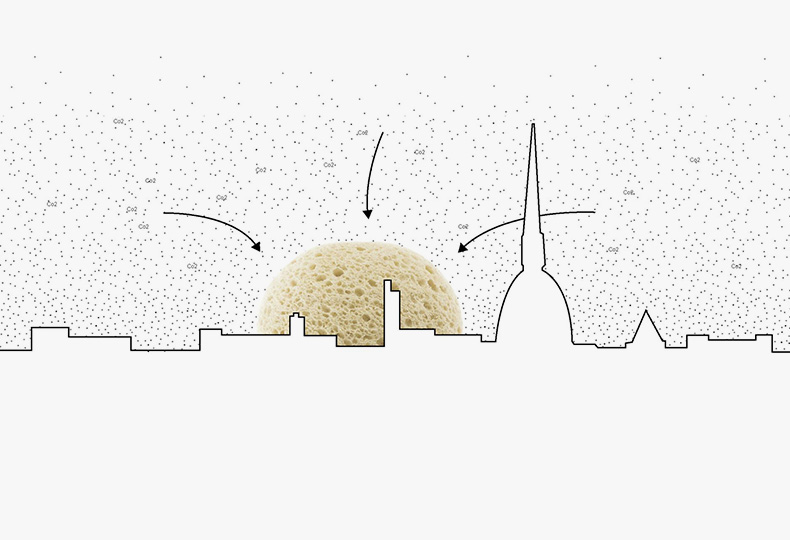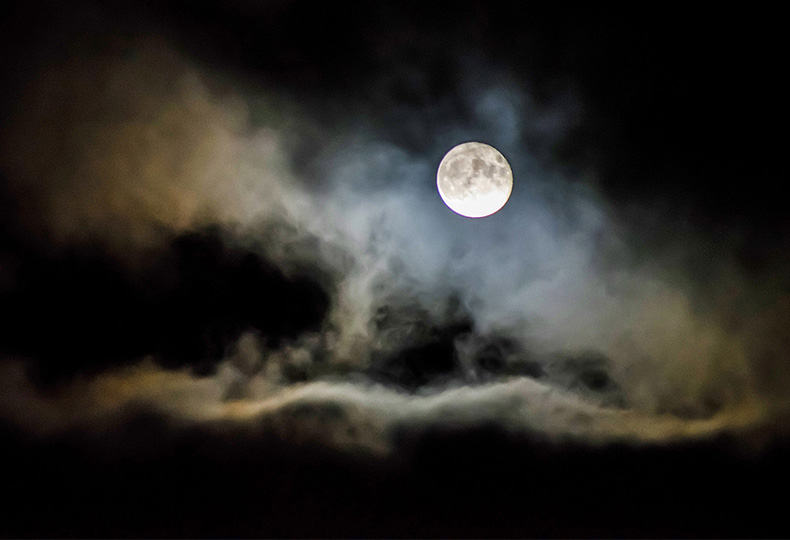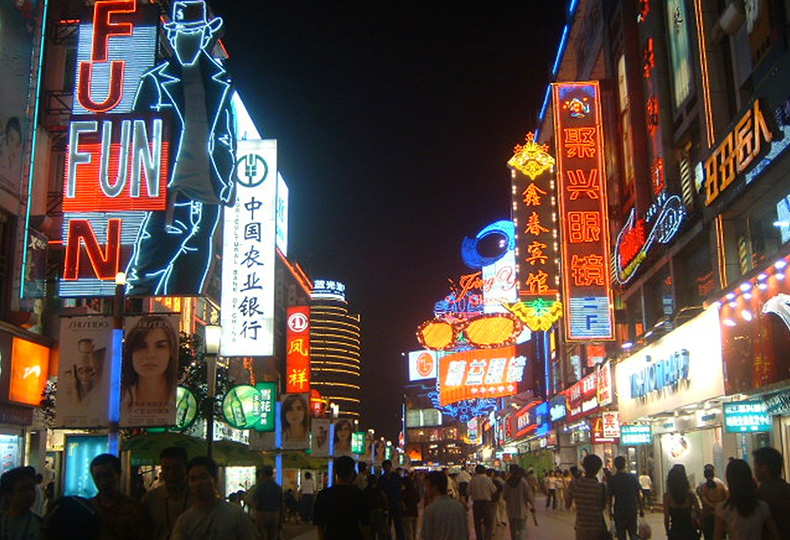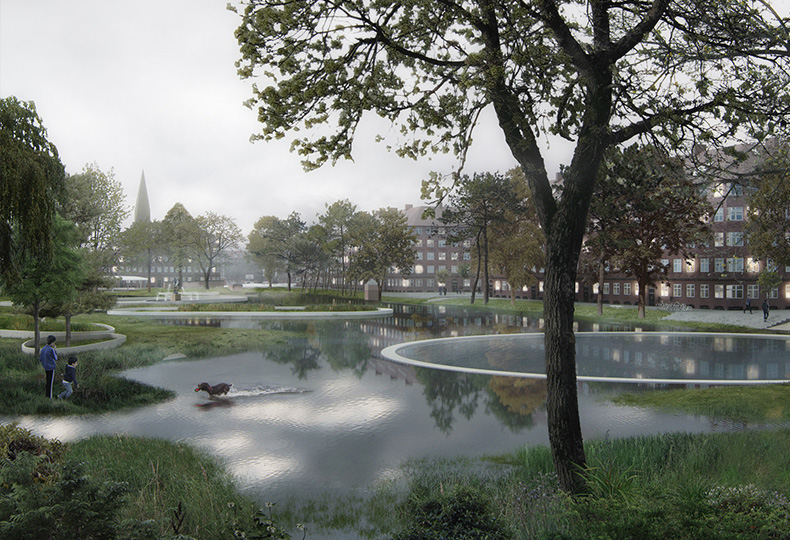
Three urban projects for a better future
The commonplace prohibition of plastic bags is eventually indicative of something: seems like that the major corporations and even the entire states have finally realized that it’s time to address the environmental issues, and the problem here is much wider and much more complicated than simply getting rid of the plastic. The air in the big cities is becoming barely breathable, and the nature behavior is getting more and more unpredictable. The designers offer their own solutions for better future ranging from Copenhagen manmade lakes to the artificial moon in Chengdu.
Homemade mountain
The idea of making 90-meters-high artificial green hill belongs to the Dutch architect Angelo Renna Should this project be approved, the city of Turin soon will house its own earth-fill mountain – the green landscaped area called Sponge Mountain absorbing the carbon dioxide and offering new large recreation park for the residents. It is planned to elect the hill of soil excavated from the construction site of the 273-kilometers-long railway tunnel connecting Turin to Lyon. According to the best estimates, the construction earthworks are expected to result in around six million tons of removed soil.
Renna developed this concept for SUCCESS Project funding research into problems of urban environmental pollution, where engineers, geologists and ecologists are working along with designers to investigate the ways in which soil could be optimized to absorb carbon dioxide in the cities. Turin is already one of the most polluted cities in Europe, and the situation is getting progressively worse and worse every year. In order to decrease the emissions of pollutants and other substances into the atmosphere, the municipal authorities regularly introduce temporary traffic bans and launch advertising campaigns against smoking. The new green landmark is expected to dramatically change the situation in the city.
Artificial moon
The municipal authorities of Chengdu, China, recently decided to replace the streetlights with artificial moon. The Moon-like manmade satellite will imitate the natural moonshine, but significantly brighter, so there will be enough glow to light the city street during nighttime. Such ambitious project was announced by Wu Chunfeng, the Chairman of Chengdu Aerospace Science and Technology Microelectronics System Research Institute. According to Chunfeng, the artificial moon will shine eight times brighter than the real one and will be able to reflect light on a 10 to 80 kilometer area, while the actual range may be adjusted with the accuracy up to several meters. The first tests of the manmade satellite started several years ago, but the engineers have managed to bring the technology to perfection only recently, and the artificial moon is now expected to be launched in 2020.
The artificial moon will feature mirror-like coating designed to reflect sunlight using the special wings with adjustable angle, so the light may be focused on a specific area. According to People's Daily, the project inventors have been inspired by the idea of a French artist, who imagined hanging a necklace made of mirrors above the Earth which could reflect sunshine through the streets of Paris all year round.
Manmade lake
These water treatment facilities and water collecting basins are the project conceived by the landscape architectural studio SLA in cooperation with Ramboll engineers. The project is called The Soul of Nørrebro and is intended to prevent flooding in the Copenhagen area. The new ecosystems have been adapted to the city residents’ needs, where, for example, during the sunny days the water collecting basin may operate as the recreation and sports ground. The project will be located at the Hans Tavsens Park and along the Korsgade Street connecting the park with the Peblinge Lake and will serve as the system for redirection of rainwater during heavy rains. As a result, the team designed complex landscape park with trees, flowers, grass and lakes. The rainfalls will be collected into reservoirs (the basin is designed to process up to 18 000 cubic meters of water simultaneously), purified and then redirected to the Peblinge Lake. Thus, the engineers managed to combine hydrological, biological and social facilities as part of the single project.
Five years ago, Nørrebro district in Copenhagen suffered the flood, which resulted in all basement levels of adjacent houses in the neighborhood being flooded. In search of the solution, local municipal authorities organized open contests of ideas on how to resolve this issue and received more than 300 proposals. Many of them were focused on construction of special rainfall pipes for water collection, which, however, would cost four times as much as the park reconstruction and landscape design efforts. As soon as The Soul of Nørrebro received regulatory approval, the district authorities started to prepare local residents for the upcoming project: they installed informational stands and arranged special educational events (where, for example, the special greenhouse was constructed to demonstrate how the water is treated by the plants). The works on The Soul of Nørrebro construction will commence in the next year and are expected to have been completed by 2022.
